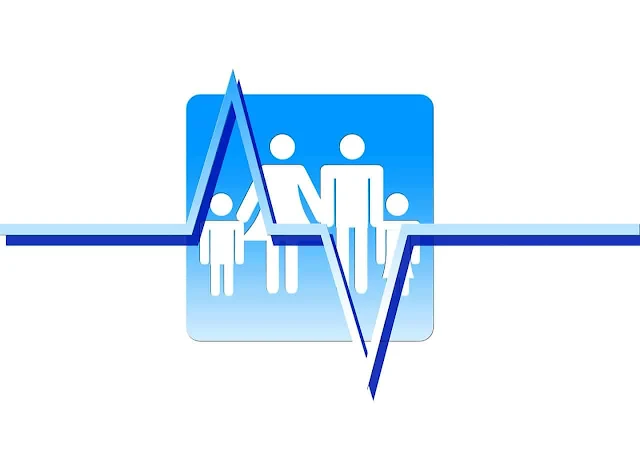Judge Strikes Down Kentucky’s Medicaid Work Rules
WASHINGTON — A federal judge on Friday blocked Kentucky’s closely
watched decide to require many Medicaid recipients to figure, volunteer or
train for employment as a condition of coverage.
The state had been poised to start out completing the new rules
next week and to phase them in fully by the top of this year.
Judge James E. Boasberg of administrative district Court for the
District of Columbia, an Obama appointee, ruled that the Trump administration’s
approval of the plan had been “arbitrary and capricious” because it had not adequately
considered whether the plan would “help the state furnish medical assistance to its citizens,
a central objective of Medicaid.”
The ruling within the Kentucky case is that the first on this issue, but it'll almost never be the last; the question may finish up before a more conservative
Supreme Court with two Trump appointees.
Three other states have already gotten permission from the Trump administration
to impose work requirements, and 7 more have asked for clearance to do so.
Gov. Matt Bevin of Kentucky, a Republican, has said that if he
ultimately loses in court, he will end the Medicaid expansion in Kentucky.
But rather than announcing plans to appeal the ruling Friday, the
state’s top health official said he would work with the Trump administration to
“quickly resolve the only issue raised by the court in order that we will move forward.”
The official, Adam Meier, added that if the new rules couldn't be quickly
implemented, “we will haven't any choice but to form significant benefit
reductions.”
Seema Verma, chosen by President Trump to run the Centers for
Medicare and Medicaid Services called the choice “disappointing” and said she would ask
the Justice Department “to chart a path forward.”
The debate over requiring poor people to figure to stay their
insurance encapsulates fundamentally
different visions of the role of Medicaid, a program jointly funded by federal
and state governments that now covers one in five Americans.
Many Republicans see it as a welfare program that ought to be
conditioned on participants working if they're able, while Democrats consider it an important element of the govt safety net for the
poor.
Requiring Medicaid recipients to figure — and to pay monthly
premiums, which was also part of Kentucky’s plan — would have significantly reduced the
amount of individuals with coverage, many experts predicted.
People could lose their health benefits if they were deemed ready
to work or volunteer but didn't, or were unable to stay up with premium payments
or provide the documentation monthly to prove that they had worked the required
80 hours.
Mr. Bevin, a vocal opponent of the Affordable Care Act, took
office after his Democratic predecessor enthusiastically expanded Medicaid under the law.
He has argued that the program was created for less than the
foremost vulnerable citizens — those that aren’t merely poor, but also
disabled, elderly, pregnant, or younger than 21.
Mr. Bevin and a growing number of mostly Republican governors
believe that adults with no disabilities, millions of whom became eligible for
Medicaid under the health law, should work or otherwise engage in their
community to stay their coverage.
More than 400,000 Kentuckians have joined Medicaid since 2014 as a
results of the expansion, and therefore the state estimated that some 350,000
of them — a few quarters of its overall Medicaid population — would be subject
to the new work rule.
But many recipients have already got jobs or otherwise would meet
the need.
The state had planned to grant exemptions to people it deemed
medically frail or who were pregnant, in school, or the first caregiver of a
dependent child or disabled loved one.
Advocates for the poor say that even many working Medicaid
recipients would have lost coverage due to the new documentation requirements.
Kentucky itself has estimated that 95,000 fewer residents would
are enrolled in Medicaid within five years, although its lawyers said many of
these people would have found jobs that offered insurance.
Regardless, the plaintiffs used Kentucky’s estimate to argue that
employment requirements would have
thwarted the aim of Medicaid.
The Trump administration approved Kentucky’s plan in January,
shortly after Ms. Verma announced a serious policy shift letting states require many
adults to figure or participate in other “community engagement activities” as a condition of
eligibility for Medicaid.
Weeks later, the National Health Law Program, the Kentucky Equal
Justice Center and therefore the Southern
Poverty Law Center filed the suit on behalf of 16 Medicaid beneficiaries within
the state.
The work requirement has drawn the foremost interest.
Arkansas,
Indiana and New Hampshire have won permission to follow in Kentucky’s
footsteps and 7 other states are expecting the Trump administration to make the decision whether or not they can, too.
Those states are Arizona and Ohio, which have expanded Medicaid,
and Kansas, Maine, Mississippi, North Carolina, Utah, and Wisconsin, which haven't and
would direct their work requirement at the tiny number of adults who weren't
disabled, mostly mothers of dependent children.
Michigan, Virginia and a number of other states were also
getting to pursue work requirements but had not yet submitted applications.
“The Trump administration’s plan to transform the Medicaid program
through executive action has been restrained,” said Jane Perkins, the legal
director for the National Health Law Program, which provides legal services for
the poor.
“The purpose of the Medicaid Act is to furnish medical assistance,
and this approval couldn't stand because it had been doing just the other —
restricting coverage.”
Although Judge Boasberg’s ruling affects only Kentucky, advocacy
groups will likely challenge other states’ requirements and his decision could
influence those cases.
Mr. Bevin said last week that the legality of labor requirements
“will be decided within the Supreme Court, almost without question.”
The Trump administration and therefore the state of Kentucky,
which intervened within the case, had asked Judge Boasberg to throw out the
case on grounds that Congress gave the health and human services secretary
broad discretion to approve Medicaid demonstration
projects.
Lawyers for the administration also argued that the secretary,
Alex M. Azar II provided many evidence that working improves health.
Judge Boasberg disagreed. “While the last word decision whether to
grant approval rests with the secretary, his discretion isn't boundless,” he wrote.
He also said the important the thing to think about wasn't whether
work requirements would improve health, but whether they would “furnish medical
assistance” to the poor, because the Medicaid statute states as its goal.





